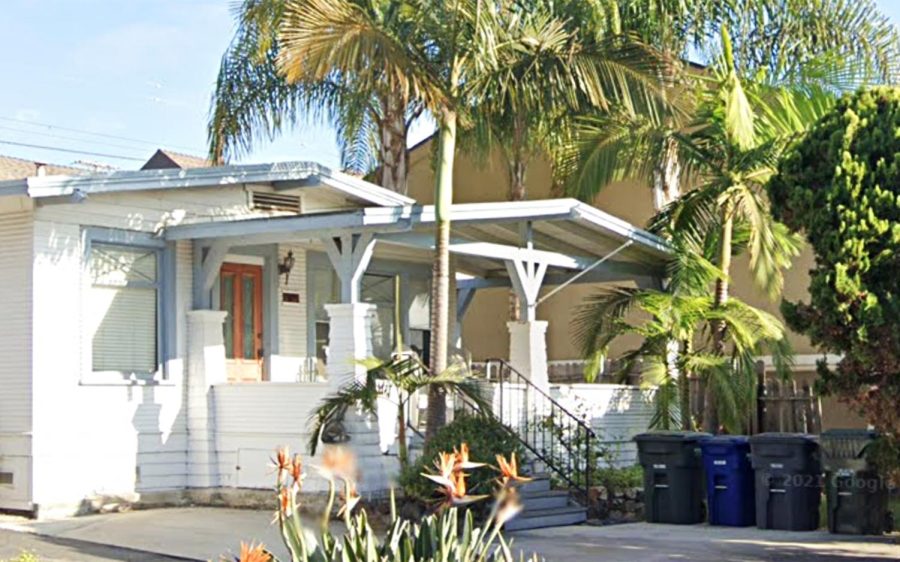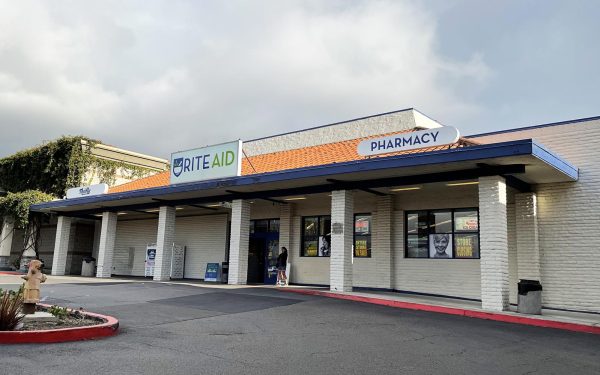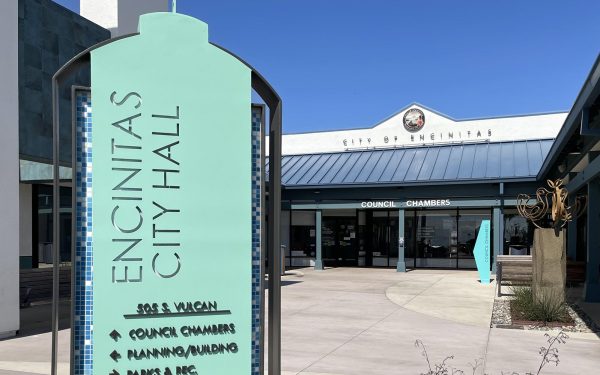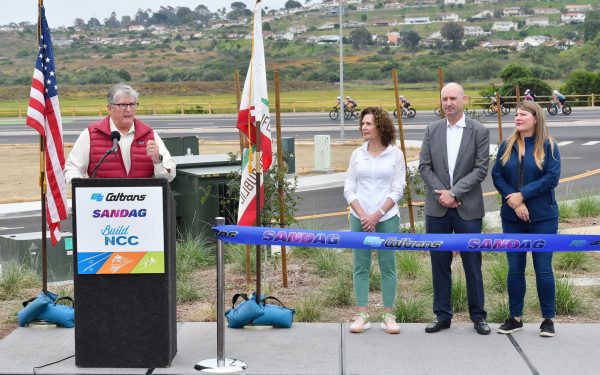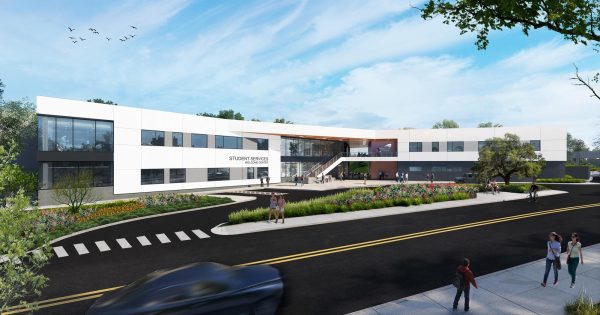Cardiff dwelling’s demolition stirs discussion of historical designations
The recent demolition of this small century-old bungalow in Cardiff, believed to have been a pastor’s house for a former church located on a property next door, raised debate on social media about what the historical preservation of buildings means in the city of Encinitas. (Google Street View photo)
September 30, 2022
A 100-year-old house located behind a historic church building at 230 Birmingham Drive in Cardiff was demolished in mid-August. The old church, presently a business building called The Sanctuary, has some protected status as a historical designation, but the demolition of the property behind it ― built in 1910 as a catalog kit, according to locals ― caught residents’ attention on social media.
The demolished building, on Manchester Avenue, is believed to have been the pastor’s residence.
Unbeknownst to many, Cardiff is home to a plethora of potentially historic buildings that range from 50 to 100 years old. After the Kumeyaay native population and later Spanish colonization, the first known modern settlement of Cardiff was in 1875 by the MacKinnon family. In 1909, J. Frank Cullen, a developer from Boston, purchased land from the MacKinnons to cultivate land for farming.
“I’ve lived in Cardiff for over 40 years. I had not seen any demolition of major structures and have seen the (Encinitas) boathouses saved. I have seen minor structures demolished but really have no great historical significance,” said Marc Ledergerber, a resident who spotted the demolition in August. “When I saw the minister’s Sears kit home being demolished, I was shocked. I immediately drove over to the (city) building permit office to inquire how this could have been permitted.”
Onetime retail giant Sears is estimated to have sold between 70,000 and 100,000 catalog homes in the United States between 1908 and 1940.
Ledergerber said he was frustrated that the demolition was not announced or that the house wasn’t given the chance to be saved. After seeing the extremely long wait for the building permit office, he announced the demolition on NextDoor.
“Something like that should have been announced and at least given the opportunity to move the building to another lot; I would have considered it as an ADU,” he said. “It would have saved the owner demolition costs — the building was solid cedar and redwood.”
Declaring a small building as an ADU (accessory dwelling unit) can have the benefits of saving demolition costs while adding to much needed housing for the community. With rising rent costs in San Diego, ADUs are becoming more popular.
“ADUs and JADUs (junior accessory dwelling units) provide housing opportunities within existing neighborhoods creating housing that is already connected to the local character and infrastructure,” the city of Encinitas explains on its website. “The additional units help diversify the market for renters while providing supplemental income for homeowners, and thus increasing affordability throughout Encinitas.”
While it is possible to turn an old building into accessory housing, some believe it is important to preserve potentially historic buildings for educational purposes as well. The San Dieguito Heritage Museum, for example, collects, preserves and provides education about the history of North San Diego County.
In 2020, its Heritage Ranch acquired the Dunham House, a 135-year-old beach cottage located in Del Mar, to be moved to its property in Encinitas.
“This gem of local history was in danger of demolition as the property owner planned to construct a new home on the site at 119 10th Street, Del Mar,” the Heritage Museum states on its website. “The Del Mar Historical Society had endeavored to find a permanent home for this local treasure in Del Mar and, with time running out, they approached the SDHM in an effort to find it a permanent home.”
With the help of staff and volunteers, the Heritage Museum was able to acquire the home by fundraising to move the building and create an exhibit space on-site.
Owners of historic buildings in Encinitas must seek resources themselves in order to declare official historic status and gain protection against demolition.
“We do have locally significant historic status, and we do have historic district elements of our Encinitas and Cardiff specific plans,” said Joy Lyndes, Encinitas city councilwoman representing Cardiff. “Unfortunately, it is often owner driven — meaning if the owner is interested in historic status, then they can seek it.”
Lyndes also runs a sustainable-landscape architecture firm in Encinitas, and she said she understands the importance of preserving history.
“We preserve artifacts and information through the Encinitas Historical Society and the Heritage Museum,” she said. “Our Cultural Arts Committee along with the Historical Society is launching a historic signage program. I am interested in proposing a stronger historic property policy.”
The Encinitas Preservation Association exists to preserve some of the many cherished artifacts in the city. Over the past decade or so, the association has worked to protect the Encinitas Boathouses, which were purchased by a collective of city interests in 2008 along with an apartment complex on the property.
“With the help of donations, rent and community partners, the EPA has since poured thousands of dollars into restoring the boathouses,” the association states on its website. “The association was also able to put the boathouses on the map by including it on the National Registry of Historic Places in 2019. This step has allowed the association to ensure the protection of the boathouses for generations to come.”
Along with the Encinitas Preservation Association, the Encinitas Historical Society also works to honor and preserve the city’s heritage. This society provides research and resources to assist in the preservation of historic buildings in Encinitas.
Currently, the city of Encinitas recognizes 159 structures as having historic value potential, according to an environmental analysis by city officials.
The environmental analysis report explains that “generally, structures 50 years of age or older have the potential to be historic resources, based on National Register of Historic Places (NHRP) guidelines. Structures must have retained their original integrity and context in order to be considered a historic resource.”
The recently demolished century-old Cardiff dwelling that drew social media outcry appeared largely unaltered, interior photos posted on the Redfin and Realtor.com websites indicate, in addition to exterior photos on Google Maps.
Those interested in learning more about Cardiff’s history can seek information through the Encinitas Historical Society or visit the Heritage Museum.
Samantha Cox is a North County freelance writer.
encinitas current, cardiff current




